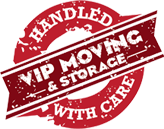Los Angeles is experiencing a moving boom, with an influx of individuals and families flocking to the city for its opportunities, lifestyle, and vibrant culture. In this blog post, we’ll delve into the latest trends shaping the Los Angeles moving scene and provide valuable tips for a seamless transition to your new home in this dynamic city.
- Remote Work and Lifestyle Shifts:
- Explore how remote work and lifestyle shifts are influencing the moving trends in Los Angeles.
- Discuss the rise of digital nomads, freelancers, and remote workers choosing LA for its work-life balance and amenities.
- Tech-Driven Moving Solutions:
- Highlight the emergence of tech-driven moving solutions in Los Angeles, such as virtual surveys, online booking platforms, and AI-powered logistics.
- Discuss how technology is streamlining the moving process and enhancing customer experience.
- Sustainability and Eco-Friendly Practices:
- Explore the growing emphasis on sustainability and eco-friendly moving practices in Los Angeles.
- Discuss the use of electric vehicles, recyclable packing materials, and waste reduction initiatives in the moving industry.
- Neighborhood Revitalization and Community Focus:
- Discuss the trend of neighborhood revitalization and community-focused living in Los Angeles.
- Highlight neighborhoods experiencing revitalization efforts and community initiatives that promote connectivity and engagement.
- Concierge Services and Personalized Experiences:
- Explore the demand for concierge services and personalized moving experiences in Los Angeles.
- Discuss how moving companies are offering tailored solutions, such as packing assistance, storage options, and home setup services.
- Cultural Diversity and Inclusivity:
- Celebrate the cultural diversity and inclusivity of Los Angeles, attracting people from diverse backgrounds and communities.
- Discuss the importance of cultural sensitivity and inclusive practices in the moving industry.
- Health and Safety Protocols:
- Highlight the implementation of health and safety protocols in the wake of the pandemic, ensuring a safe and hygienic moving experience.
- Discuss measures such as contactless moving options, sanitization procedures, and social distancing practices.
The Los Angeles moving scene is evolving with the times, embracing technology, sustainability, community, and diversity. By staying informed about these trends and following our tips, you can navigate the Los Angeles moving boom with confidence and ease, ensuring a seamless transition to your new home in the City of Angels.



